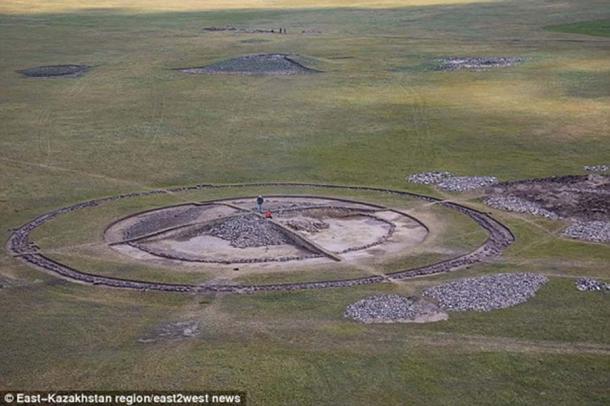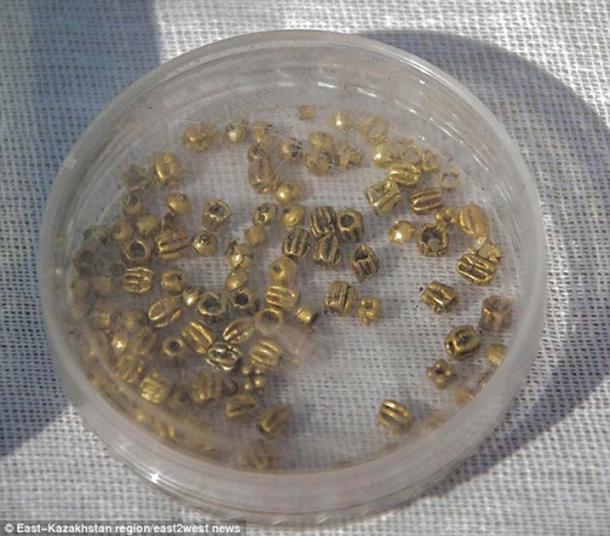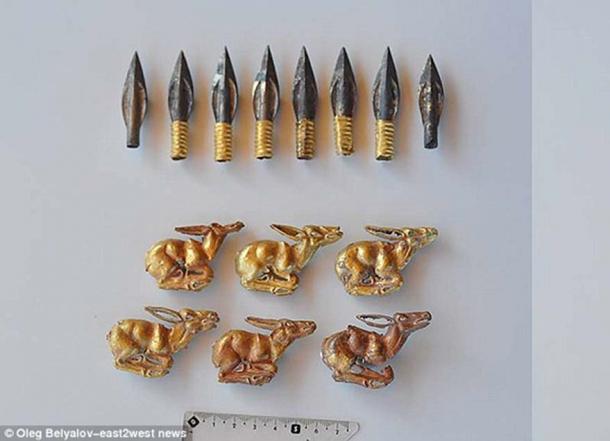Who were the Saka?
The Saka were a nomadic people who spoke an Iranian language and were a sub-group of the great Scythian group who dominated the Eurasian Steep for centuries. The Saka core area was in Central Asia and from here they expanded into Iran, India and Central Asia. They were renowned for their horsemanship and their metal work. The Saka were first recorded in the 9 th century BC and were a major military power. However, they faded from the pages of history over time, but archaeologists have been rediscovering their culture and history in the twentieth century.

The burial mound is one of 200 or so found on the Eleke Sazy plateau. (Image: east2west news)
A Real Treasure Trove
Kazakhstani archaeologists were excavating a Kurgan or a burial mound in the remote Eleke Sazy plateau in the Northeast of the Central Asian Republic. The team of experts is led by Professor Zainolla Samashev, who stated that “a large number of valuable finds in this burial mound” was unearthed, reports KITCO News . The site was first excavated two years ago, but there was also some digging at the site in the 18 th century in the reign of Tsar Peter the Great.
In total some 3000 golden objects have been recovered. The golden treasure includes plates, and jewelry, including, chains with precious stones and bell-shaped ear-rings. A large number of exquisitely crafted animals have also been found. There have also been a great number of golden beads that were used to decorate the elaborate clothing of the Saka. It is believed that the find dates from approximately 2,800 to 3000 years ago.

Gold beads were amongst the haul. (Image: east2west news)
The burial mound is thought to be the final resting place of a noble couple or a family who belonged to the Saka elite. Typically, members of the elite were buried in Kurgans. The team of archaeologists has still not uncovered the remains of those who were buried in the mound and this raises the prospect of even more discoveries.
The discovery of the treasure is demonstrating the great metal-working skills of the Saka people. The golden objects demonstrate that they could rivet gold and according to the Sun, ‘show sophisticated micro-soldering technique’. This allowed them to create beautiful jewelry and other artifacts. They clearly had advanced metallurgical skills and were adept at mining and extracting gold.

The high-level metalwork exhibits the advanced skills of the Saka people. (Image: © Oleg Belyalov/ east2west news)
There has been great excitement in Kazakhstan at the announcement of the discovery. KITCO News reports that Danial Akhmetov, the local Governor, stated that the find “gives us a completely different view of the history of our people.’ The discovery of the priceless golden objects shows that the people of Kazakhstan are descended from a great culture.
The Importance of the find
The discovery of so many astonishing golden objects is demonstrating the sophistication of the Saki and that they were master craft persons. It also demonstrates that, despite the fact that the Saki were nomads, they were very advanced. The discovery of the golden objects and the expectations of many more in the Kurgan will allow experts to gain more insights into the Saki and their culture.
There are plans for more excavations in the area, it is believed that there are some 200 burial sites in the locality. There are so many located here because, according to the Daily Mail, ‘the plateau with rich pastures was seen as paradise by the Saka Kings’. However, experts are cautious about how many more discoveries are yet to be made. That is because grave robbers and looters have long been removing precious items from the Kurgans.
Top image: Some of the 3000 gold and metal objects found in the burial mound in Kazakhstan. Source: © Oleg Belyalov – east2west news